Welcome to our blog post on high-density gooseberry plantations! This article explores the spacing, plants per acre, techniques, cost, and yield of cultivating this incredible fruit. Gooseberry, also known as amla, is a powerhouse of nutrients and is gaining popularity due to its numerous health benefits.
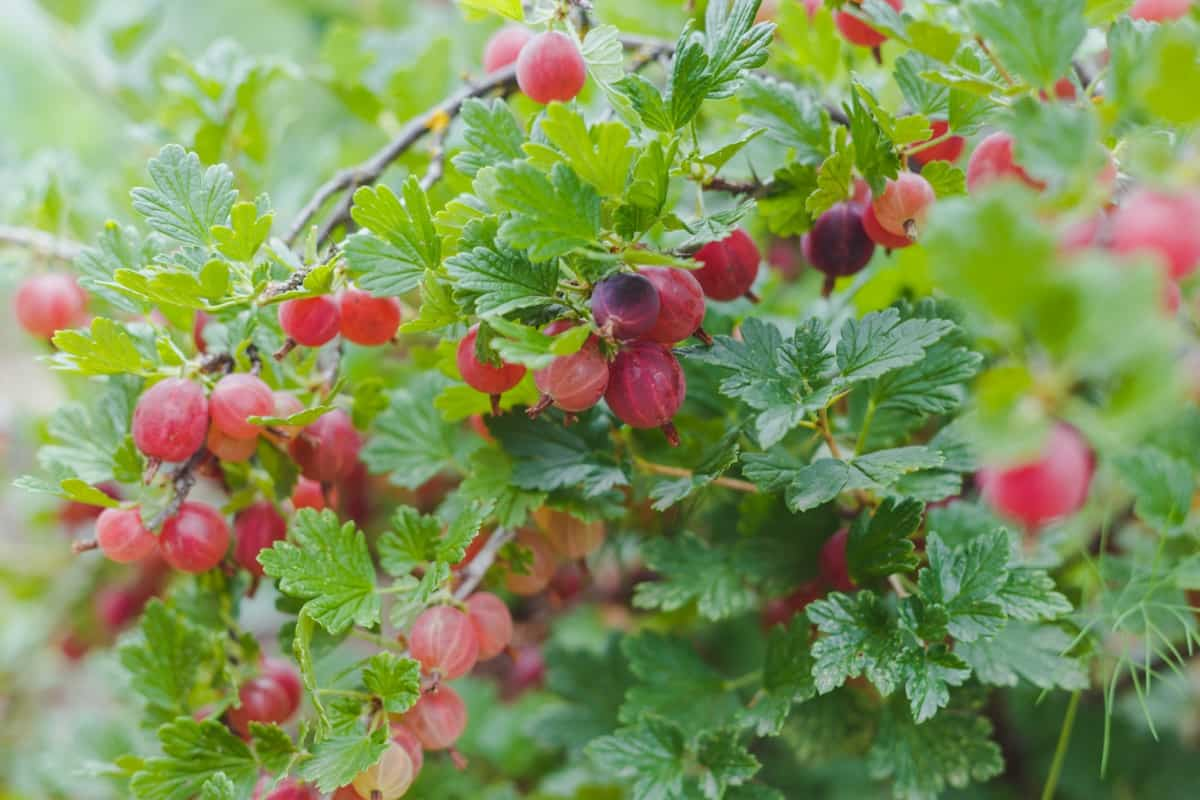
When it comes to high-density plantations, spacing plays a crucial role. We can maximize productivity and ensure healthy growth by carefully planning the distance between plants. Knowing the number of plants per acre also helps optimize resources and estimate the potential yield.
What is High-Density Gooseberry Plantation?
High-density gooseberry plantation is a modern farming approach where gooseberry plants are cultivated closely, optimizing land and resources for increased productivity. It involves carefully planned spacing and techniques to achieve maximum yield per acre.
Gooseberries, known for their tart flavor and health benefits, come in various types, such as Indian gooseberry (amla), European gooseberry, and American gooseberry. Each type has its unique characteristics and culinary uses. High-density plantation allows farmers to grow diverse gooseberry varieties, catering to different market demands and consumer preferences.
Benefits of High-Density Gooseberry Plantation
High-density gooseberry plantation offers numerous benefits in terms of productivity and concerning this remarkable fruit’s health and nutritional aspects. Gooseberries, commonly known as amla, are packed with important vitamins and minerals, making them a valuable addition to a balanced diet. These tangy fruits are a rich source of vitamin C, which boosts immunity, aids collagen synthesis, and supports overall skin health.
Additionally, gooseberries contain high levels of antioxidants, such as polyphenols, that help fight free radicals and reduce oxidative stress in the body. The high-density plantation technique maximizes the yield per unit area, allowing farmers to cultivate more gooseberry plants. Proper spacing and management allow the plants to receive adequate sunlight, air circulation, and nutrients, resulting in robust growth and higher productivity.
This plantation method also facilitates the efficient use of resources like water, fertilizers, and pesticides. From a nutritional standpoint, gooseberries provide an array of health benefits. They have been linked to improved digestion, enhanced hair, and eye health, strengthened liver function, and reduced inflammation. Moreover, the high vitamin C content in gooseberries aids in iron absorption, making them particularly beneficial for individuals with iron-deficiency anemia.
High-Density Gooseberry Plantation Techniques to Maximise Yield and Profits
High-density gooseberry plantation techniques are well-suited for amla cultivation, even in marginal and wastelands. Using systematic pruning methods, high-yielding varieties can be maintained as productive bushes, ideal for close planting. Varieties like NA 7, Krishna, and Chakia are recommended for spacing of 3 meters by 3 meters, accommodating up to 1200 plants per hectare.
In case you missed it: Top 15 Steps to Boost Indian Gooseberry/Amla Yield: How to Increase Fruit Size, Quality, and Production
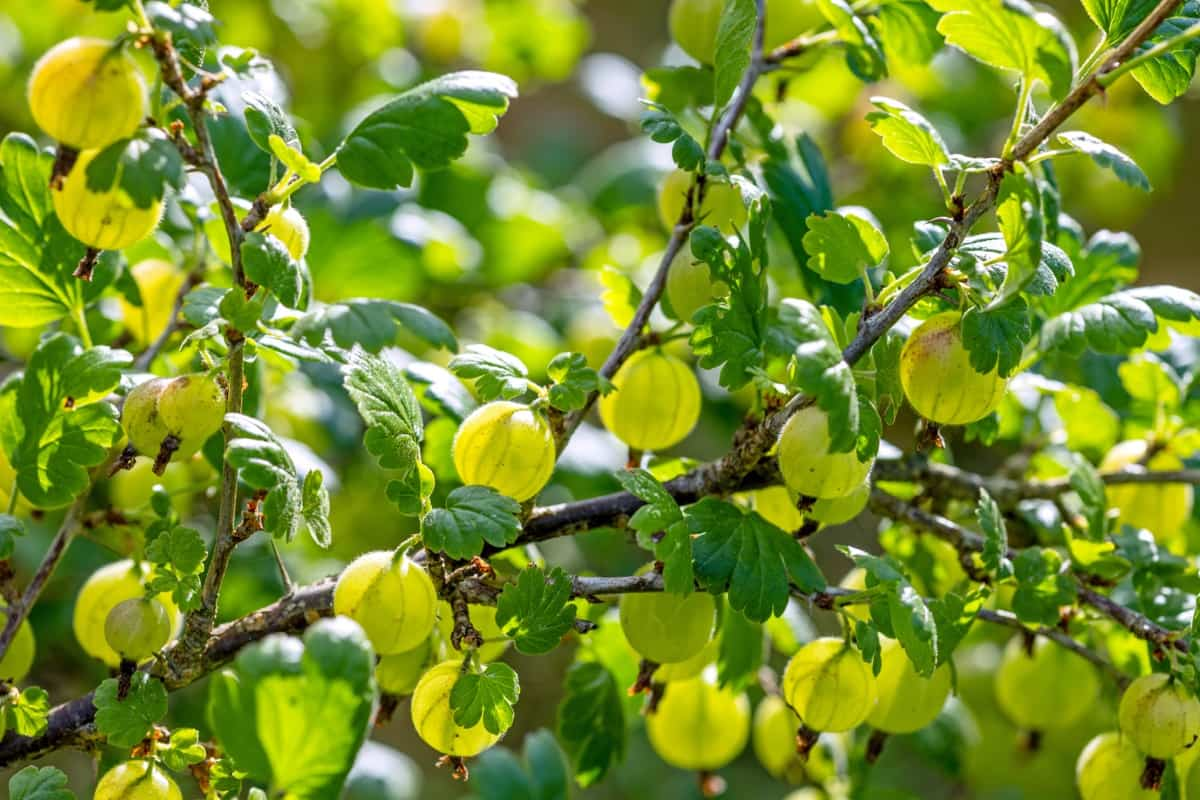
Intercropping with shade-tolerant medicinal plants such as Phyllanthus sp. and gulmeg is possible until the amla trees reach economic bearing age. Efficient water management is crucial, with drip irrigation systems delivering 25 liters per plant daily during the establishment phase, reducing to 25 liters once a week in later stages. The plants are pruned systematically, and fruiting can be observed in young plants, with economically viable and larger fruits obtained from the third year onwards.
Each plant yields approximately 25 kg of fruits annually, gradually increasing to 50 kg and eventually around 100 kg annually. The cost of establishing an amla plantation is around Rs. 1.25 lakh per hectare, with returns starting from the third year. Intercropping with medicinal plants provides additional income. With effective resource management and suitable varieties, high-density gooseberry plantations can yield significant rewards.
High-Density Gooseberry Plantation Varieties
High-density gooseberry plantation offers a wide range of varieties, both from India and around the world, suitable for cultivation. In India, popular varieties include NA 7, Krishna, and Chakia, known for their high yield potential and adaptability to close planting. These varieties are favored for their fruit quality, taste, and market demand. Internationally, notable gooseberry varieties include Invicta, Pax, and Careless. Invicta is a widely grown variety known for its large fruits and disease resistance.
Pax, on the other hand, produces medium-sized fruits and is valued for its excellent flavor. Careless is a popular variety in the United Kingdom, cherished for its sweet and aromatic berries. Apart from these specific varieties, regional and local variations are available in different parts of the world, each with unique characteristics and adaptability to high-density plantations. Growers must select varieties based on their specific climatic conditions, market preferences, and intended uses.
Increasing Yield in High-Density Gooseberry Plantation
Increasing the yield in high-density gooseberry plantations involves employing various practices and modern techniques to optimize productivity. Pruning is vital in maintaining plant shape, vigor, and fruiting capacity. Regular pruning helps create an open canopy, allowing sufficient sunlight penetration and air circulation, promoting healthy growth and higher yield.
Training the plants using trellises or support systems can enhance fruit production by optimizing space utilization. Applying appropriate fertilizers based on soil testing and nutritional requirements is crucial. Balanced nutrition promotes plant health, flower formation, and fruit development.
In case you missed it: High-Density Lemon Plantation: Spacing, Plants Per Acre, Techniques, Cost, and Yield
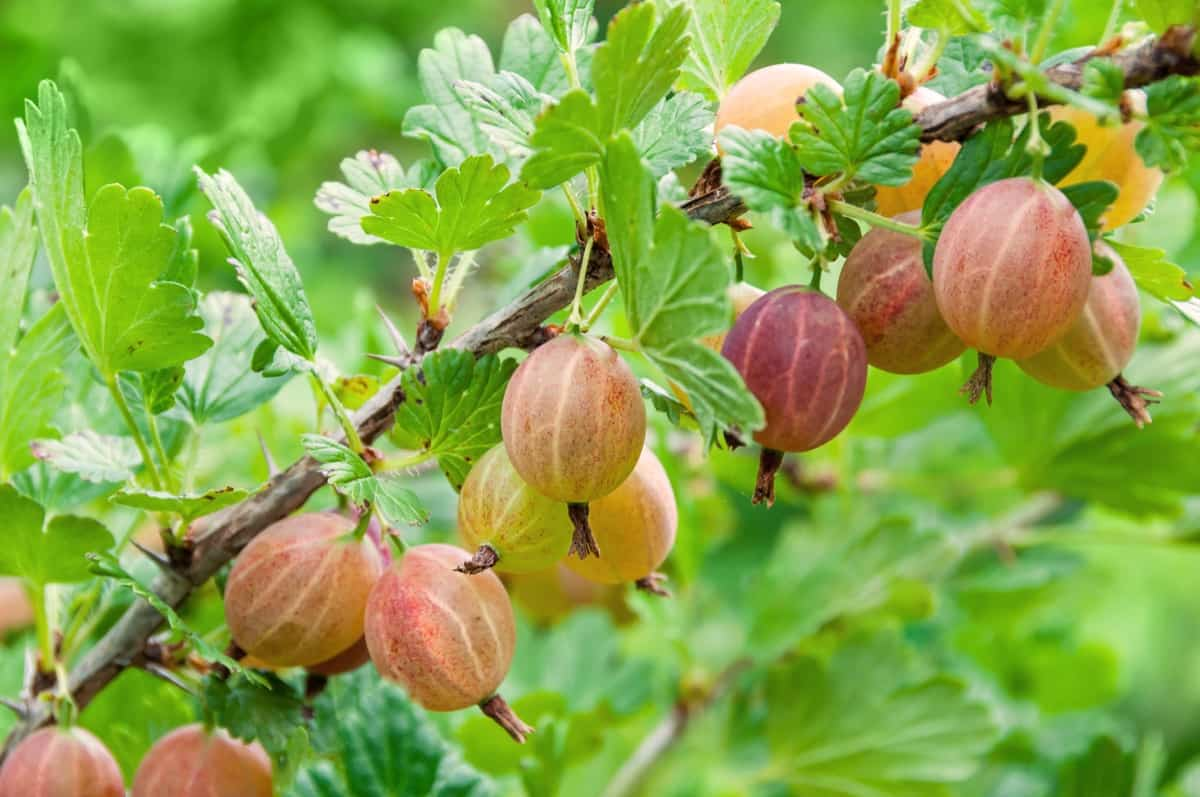
Incorporating organic matter, such as compost or well-decomposed manure, enriches the soil and enhances fertility. Modern techniques like drip irrigation ensure efficient water management by delivering water directly to the root zone, minimizing wastage, and optimizing water usage. The use of mulching techniques helps in conserving soil moisture, suppressing weed growth, and maintaining an optimal soil temperature.
Integrated pest management practices effectively control pests and diseases, reducing crop losses. Regular monitoring, early detection, and timely intervention with safe and sustainable pest control measures are essential. Advanced technologies such as precision farming, data-driven decision-making, and remote sensing can enhance yield potential by accurately monitoring and managing crop health, resource allocation, and yield prediction.
Sustainable and Best Practices for High-Density Gooseberry Plantation
Gooseberry bushes are highly adaptable and can thrive in various soil types. They are self-pollinating, so you only need to plant one bush. Pruning these bushes is easy and necessary for maintaining their shape and promoting abundant fruiting. Gooseberries are known for their generous yields, producing ample and sumptuous fruits.
There are two main types of gooseberries: culinary and dessert varieties. Culinary gooseberries are typically cooked with sugar and used in jams, pies, and other delicious treats. Dessert varieties, on the other hand, are sweet enough to be enjoyed fresh from the bush. Gooseberries come in pale green, red, and yellow varieties, with some varieties having fewer thorns than others.
To grow gooseberries, choose a bright spot in rich, well-drained soil. They can be grown as bushes, trained as standards, or against fences as fans or cordons. If space is limited, they can also be successfully grown in containers. However, it’s important to check local restrictions as some areas prohibit gooseberry cultivation due to white pine blister rust risk.
When planting a gooseberry bush, dig a hole and neem cake, and add well-rotted compost or manure to the soil. Place the bush in the hole, ensuring the soil level matches the previous level. Firmly fill in the soil and water thoroughly. Mulching around the plant helps suppress weeds and provides nutrients.
Established gooseberry bushes require minimal watering in moisture-retentive soils. Young plants and container-grown gooseberries need regular watering, especially in hot, dry weather. Applying an organic, balanced fertilizer in winter and mulching the plant base with organic materials helps promote healthy growth.
In case you missed it: High-Density Lemon Plantation: Spacing, Plants Per Acre, Techniques, Cost, and Yield
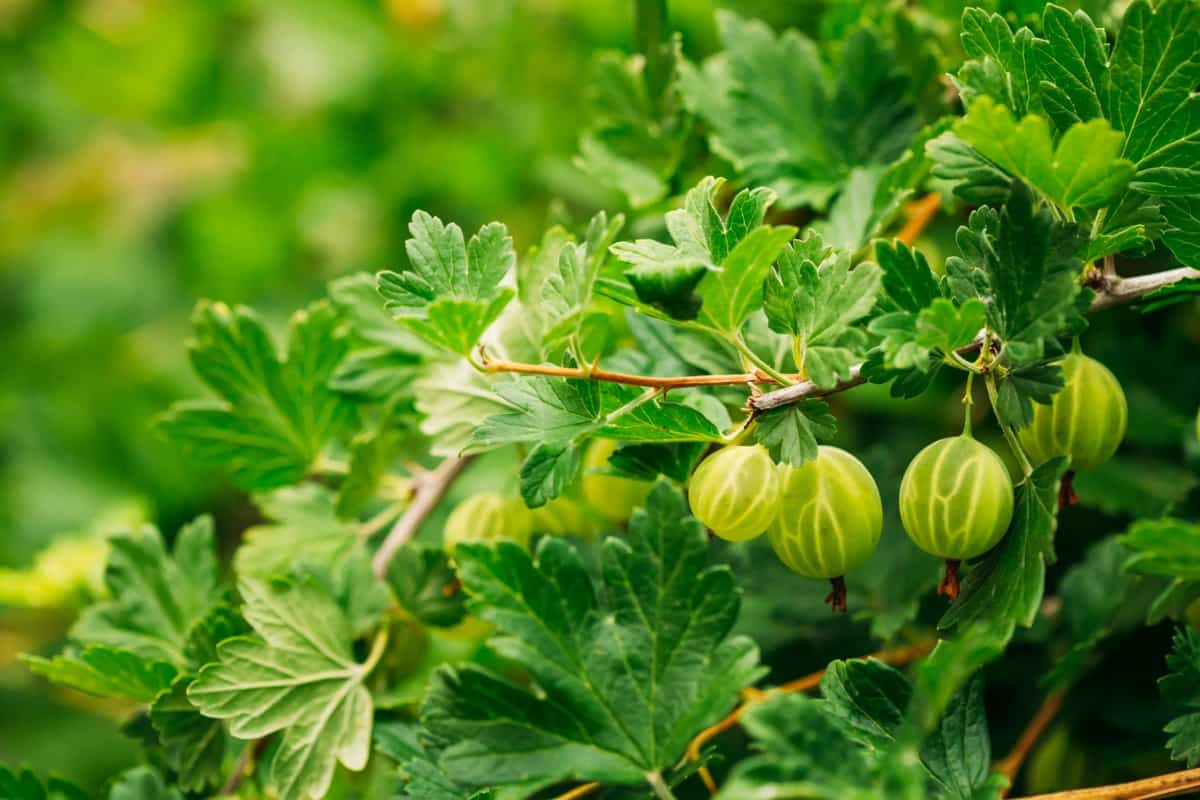
Pruning should be done during the dormant winter period. Remove dead or diseased wood, low-growing shoots, and overcrowded branches. Prune back the previous season’s growth by half and cut side shoots to between one and three buds from the base. Remove any suckers growing away from the main stem.
Harvesting begins in early summer, and it’s best to pick the berries in stages to enjoy a mix of under-ripe and fully ripe fruits. Handle the thorny fruits carefully or wear gloves while harvesting. Freshly picked gooseberries can be enjoyed immediately or stored in the refrigerator for up to a week. Excess harvest can be frozen for later use.
High-Density Gooseberry Plantation Spacing
High-yielding amla varieties like NA 7, Krishna, and Chakia are well-suited for high-density planting with a spacing of 3 meters by 3 meters. By utilizing this spacing and employing a hexagonal or triangular planting method, it is possible to accommodate up to 1200 plants per hectare.
As an additional benefit, shade-tolerant medicinal plants such as Phyllanthus sp (Keelanelli) and gulmeg can be grown as intercrops until the amla trees reach economic bearing age. Expert suggests this approach to maximize productivity and utilize the land efficiently.
Optimal Fertilization for High-Density Gooseberry Plantation
To ensure optimal fertilization for high-density gooseberry plantations, it is important to start with planting good quality and healthy grafts in well-prepared fields. The planting process involves filling small pits with organic manure and mulching them with coir pith compost, neem cake, and vermicompost to enhance the soil’s water-holding capacity. Regularly applying biofertilizers such as Azotobacter, phosphobacterium, and Vesicular Arbuscular Mycorrhiza (VAM) promotes plant growth.
During the initial three months, a drip system is set to deliver 25 liters of water per plant per day, adjusted based on soil moisture. Once the plants are established, the same amount of water is used for irrigation on alternate days. After the first year, when the plants have developed extensive root systems, they require only 25 liters of water once a week, especially during peak summer.
Additionally, systematic pruning encourages fruiting, even in young plants. Annually apply balanced NPK chemical fertilizers. Product and soil properties determine dosage. Between budding and mid-June, apply fertilizers 2-3 times. Foliar fertilization is advised. When using drip irrigation, water-soluble nutrients can be added.
In case you missed it: High-Density Orange Plantation: Spacing, Plants Per Acre, Techniques, Cost, and Yield

High-Density Gooseberry Plantation Pruning Methods
- Pruning is vital in high-density gooseberry plantations to facilitate maintenance and enhance fruit production. For bush-shaped gooseberries, after planting, the stems are cut back to around 20 cm in height to encourage the growth of new and vigorous stems.
- In the second year, 3-4 robust stems are selected, and 30% of their length is pruned. This process is repeated for 3-5 years, with the shortened stems forming the shrub’s crown. No further pruning is necessary during this period.
- After planting, theˀ stems are pruned to 2-7 buds for trunk-shaped gooseberries. In the second year, 3-4 evenly spaced branches are chosen, and 30% of their length is pruned. Excess new growth is removed.
- The same procedure is followed in the third year. More severe pruning stimulates strong growth if no significant new growth occurs in the fourth year. In the fifth year, 3-4 new branches are selected to complete the crown by pruning them by 30% of their length.
- Pruning after crown formation promotes the growth of new branches, flowering branches, and buds. It also improves air circulation within the crown and optimizes sunlight exposure for the leaves.
- To stimulate fruit production, pruning is performed in February, before the emergence of the first leaves. Branches older than five years are removed, and around 12 young branches (2-3 years old) are retained.
- Two-thirds of their initial length prune these branches. Branches growing inside the crown, close to the ground, or affected by frost or pathogens should also be removed.
Managing Pests and Diseases in High-Density Gooseberry Plantations
Some common diseases that affect gooseberry shrubs include powdery mildew, anthracnose, and rust. These diseases can cause leaf discoloration, deformities, and reduced fruit quality. To control them, regular monitoring and early detection are essential. Applying appropriate fungicides and adopting cultural practices such as proper spacing and adequate air circulation can help prevent the spread of these diseases.
Pests, aphids, and goat moths are commonly found in gooseberry plantations. Aphids are small insects that feed on the plant’s sap and can cause stunted growth and distortion of leaves. Goat moths, also known as caterpillars, can feed on leaves, buds, and fruits, leading to significant damage. Integrated Pest Management (IPM) strategies should be implemented to manage these pests effectively. This involves using biological controls like beneficial insects, such as ladybugs and lacewings, and applying targeted insecticides when necessary.
High-Density Gooseberry Plantation Harvesting Tips
The timing and method of harvesting in high-density gooseberry plantations depend on the fruit’s intended use. For processing, green fruits can be harvested from May onwards, while for fresh consumption, fully mature fruits with transparent skin, soft pulp, and a specific aroma and taste should be picked.
Harvesting can be done by hand or using shaking machines to maintain fruit quality in dry and cool weather. In terms of yield, economically viable and larger fruits are achievable from the third year of planting, with each plant initially producing around 25 kg per year. By the fifth year, the yield per tree can increase to about 50 kg per year, and from the eighth year onwards, an average of approximately 100 kg per year can be obtained.
High-Density Gooseberry Plantation Cost Analysis (1 Acre Basis)
When considering the cost analysis of a high-density gooseberry plantation on a one-acre basis, it is important to note that economically viable and larger fruits can be obtained from the third year of planting. Each plant, on average, yields about 25 kg of fruits per year. As the trees mature, around five years, the yield per tree gradually increases to approximately 50 kg per year. From the eighth year onwards, the average annual output per tree can reach about 100 kg.
In case you missed it: High Density Almond Plantation: Spacing, Plants Per Acre, Techniques, Cost, and Yield
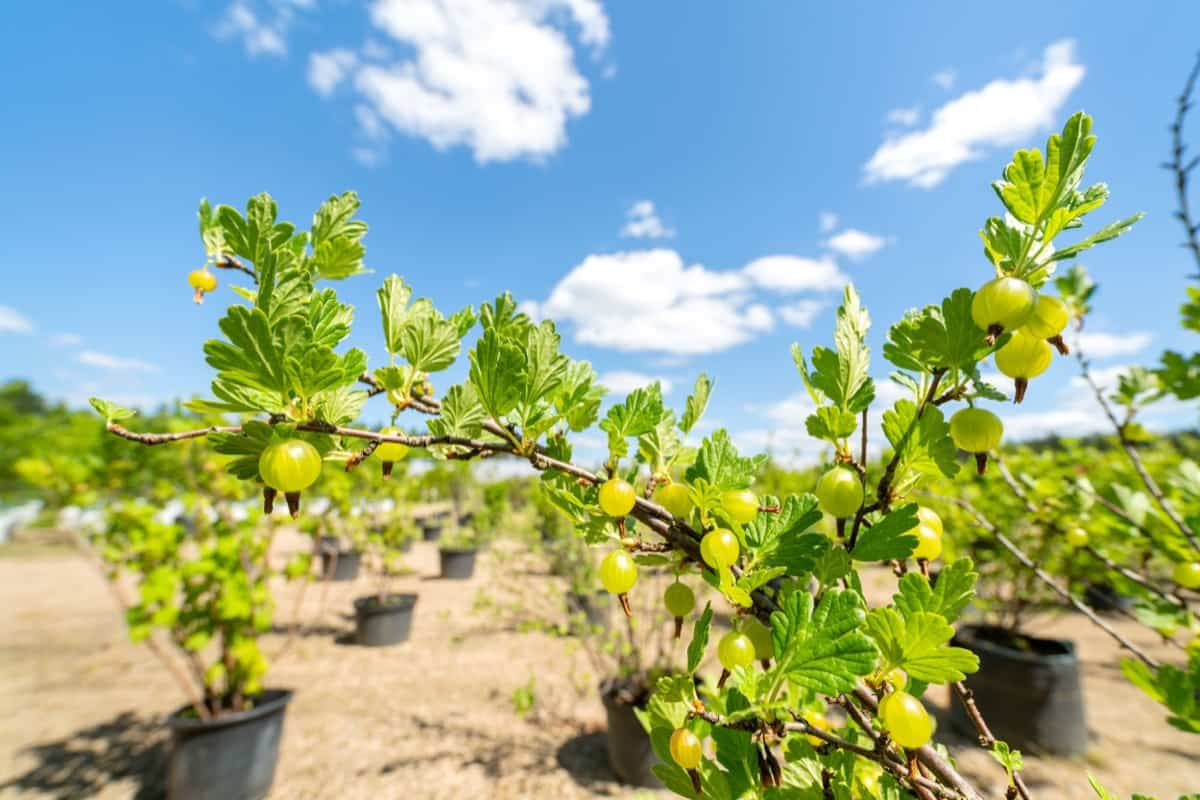
The cost of establishing a one-acre gooseberry plantation amounts to approximately Rs. 1.25 lakh. Returns from the third year, considering an average selling price of Rs. 10 per kg of fruits, can amount to around Rs. 2.5 lakhs. Additionally, cultivating medicinal plants as intercrops can provide returns until the gooseberry plants reach the bearing age, ensuring a steady and assured income stream.
Conclusion
high-density gooseberry plantation with proper spacing and techniques allows for increased plant density, resulting in higher yields. With an average of 25-100 kg of fruits per tree, it can be profitable with a cost-effective production system.
- How to Build a Low-budget Goat Shed: Cheap Ideas and Tips
- Goat Farming Training Programs in India: A Beginner’s Guide
- Types of Pesticides Used in Agriculture: A Beginner’s Guide
- Economical Aquaculture: A Guide to Low-Budget Fish Farming
- 15 Common Planting Errors That Can Doom Your Fruit Trees
- How to Make Houseplants Bushy: Effective Tips and Ideas
- Innovative Strategies for Boosting Coconut Pollination and Yield
- Pollination Strategies for Maximum Pumpkin Yield
- The Complete Guide to Chicken Fattening: Strategies for Maximum Growth
- Natural Solutions for Tulip Problems: 100% Effective Remedies for Leaf and Bulb-Related Issues
- Revolutionizing Citrus Preservation: Towards a Healthier, Greener Future
- Natural Solutions for Peony Leaf and Flower Problems: 100% Effective Remedies
- Maximizing Profits with Avocado Contract Farming in India: A Comprehensive Guide
- Natural Solutions for Hydrangea Problems: 100% Effective Remedies for Leaf and Flowers
- The Ultimate Guide to Choosing the Perfect Foliage Friend: Bringing Life Indoors
- From Sunlight to Sustainability: 15 Ways to Use Solar Technology in Agriculture
- The Ultimate Guide to Dong Tao Chicken: Exploring from History to Raising
- The Eco-Friendly Makeover: How to Convert Your Unused Swimming Pool into a Fish Pond
- Mastering the Art of Delaware Chicken Farming: Essentials for Healthy Backyard Flocks
- 20 Best Homemade Fertilizers for Money Plant: DIY Recipes and Application Methods
- How to Craft a Comprehensive Free-Range Chicken Farming Business Plan
- Brighten Your Flock: Raising Easter Egger Chickens for Beauty and Bounty
- How to Optimize Your Poultry Egg Farm Business Plan with These Strategies
- Subsidy for Spirulina Cultivation: How Indian Government Schemes Encouraging Spirulina Farmers
- Ultimate Guide to Raising Dominique Chickens: Breeding, Feeding, Egg-Production, and Care
- Mastering the Art of Raising Jersey Giant Chickens: Care, Feeding, and More
- Ultimate Guide to Raising Legbar Chickens: Breeding, Farming Practices, Diet, Egg-Production
- How to Raise Welsummer Chickens: A Comprehensive Guide for Beginners
- How to Protect Indoor Plants in Winter: A Comprehensive Guide
- Ultimate Guide to Grow Bag Gardening: Tips, Tricks, and Planting Ideas for Urban Gardeners
- Guide to Lotus Cultivation: How to Propagate, Plant, Grow, Care, Cost, and Profit
- Agriculture Drone Subsidy Scheme: Government Kisan Subsidy, License, and How to Apply Online
- Ultimate Guide to Raising Araucana Chickens: Breed Profile, Farming Economics, Diet, and Care
- Bringing Hydroponics to Classroom: Importance, Benefits of Learning for School Students
- Ultimate Guide to Raising Polish Chickens: Breed Profile, Farming Economics, Diet, and Care
- Ultimate Guide to Raising Australorp Chickens: Profile, Farming Economics, Egg Production, Diet, and Care